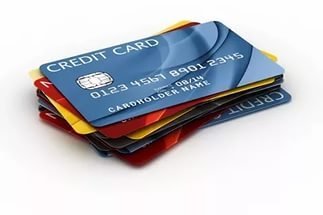
Diners Club became the first credit card company in 1950, when it issued a card allowing members to charge meals at 27 New York City restaurants. In 1958, Bank of America issued the BankAmericard (now Visa), the first bank credit card. In 1965, only 5 million cards were in circulation; by 1996, U.S. consumers had nearly 1.4 billion cards, which they used to charge $991 billion in goods annually.
The growth of credit cards has had an enormous impact on the economy—changing buying habits by making it much easier for consumers to finance purchases and by lowering savings rates (because consumers do not need to save money for larger purchases). Oil companies, car makers, and retailers have also used the cards to market their goods and services, using credit as a way of encouraging consumers to buy. Concern has been voiced over widespread distribution of bank credit cards to consumers who may not be able to pay their bills; costly losses and theft of cards; inaccurate (and damaging) credit records; high interest rates on unpaid balances; and excessive encouragement of consumer debt that has cut savings in the United States.